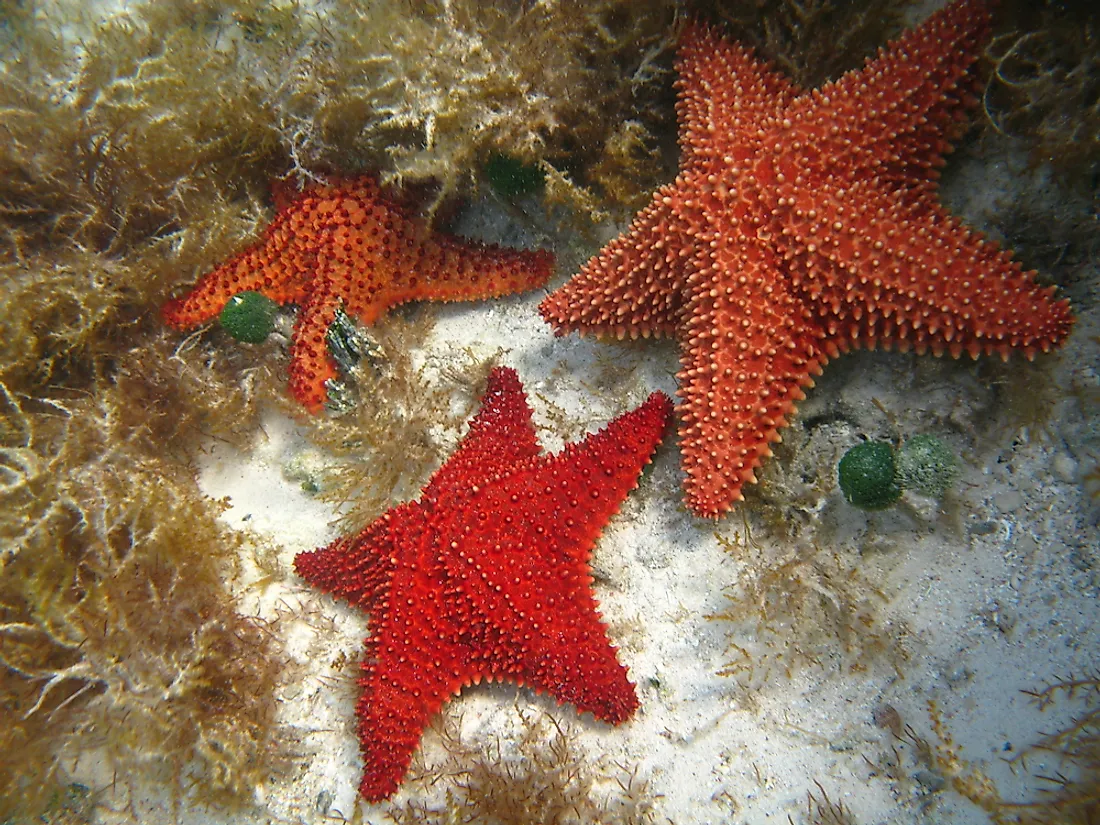Starfish - Animals of the Oceans

Starfish, also called sea stars, are echinoderms. They are star-shaped and belong to the class Asteroidea. There are over 2,000 species of starfish in the water bodies around the world. Starfish are colorful with colors such as light brown, gold, dark brown, or reddish.
Physical Description
The starfish have one central disk and five arms except for a few species that have more arms. An example of the unique species of starfish is Luidia ciliaris which has seven arms. Furthermore, the starfish belonging to the family Solasteridae have 10-15 arms.
They possess an exoskeleton which makes it easier for them to move in water. The body wall of the starfish consists of an epidermis, a thin cuticle, dermis, and a coelomic myoepithelial layer. The starfish release waste, known as ammonia, by diffusion since they lack distinct excretory organs.
Reproduction
Starfish reproduce in two ways; spawning or asexual reproduction.
During spawning, both the male and female starfish gather to mate. The male starfish releases sperm into the water while the female starfish releases millions of eggs. The eggs and sperm find each other which results in fertilization. After fertilization, the zygotes sit on the central disks or arms of the starfish until they hatch.
Asexual reproduction is a process where a starfish’s central disk splits into two. The division leads to the existence of two amputated starfish. However, with time they grow new arms which replace the lost ones.
Unique Traits
An unusual behavior in starfish is their ability to regenerate their body parts. Whenever a part of their body is chopped off or caught in a net, the remaining part of the body will grow new arms. In fact, sometimes the starfish sheds arms as a way of defending themselves from its predators.
Secondly, starfish do not have brains. Therefore, they cannot make decisions regarding their lives. Their lives are programmed to do only two things: find food and avoid predators. The complex central nervous system controls the actions of the starfish.
Habitat and Range
Starfish can only survive in salt water because they need lots of calcium for the formation of their bodies. Consequently, their habitats are oceans. The highest number of starfish lives within the Indo-Pacific Ocean region. They also flourish in the cold waters of the North Pacific.
Diet
The diet of the starfish mostly includes mussel, arthropods, oysters, small fish, clams, and snails. However, their feeding habits vary with their locations, species, design, and diet. Some starfish are not exclusively carnivores, and they may also feed on organic detritus and algae.
Starfish are opportunistic when it comes to feeding. As such, they will cease every opportunity that comes their way to feed. Starfish can feed in food larger than their bodies as they can digest food which is out of their bodies. Whenever there is a shortage of food, starfish can survive on the organic materials that have dissolved in their water habitat. They feed either through suspension feeding or by eversion of their stomachs.











